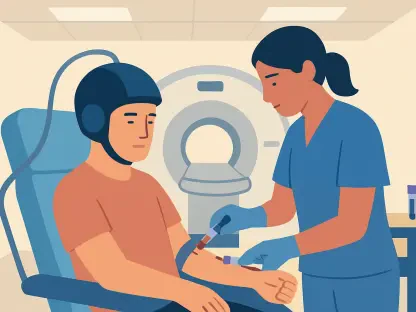The scale of diabetic eye screening would swamp any manual system left to grow unchecked, with more than four million people eligible in England and tens of millions of images flowing through a pipeline that still leans on multiple human graders per case to keep patients safe and services moving. Against that backdrop, a head-to-head platform for evaluating commercial AI systems lands not as a gadget but as infrastructure, built to test accuracy, fairness, and speed under the same rules that govern clinical reality. The proposition is simple but bold: create a trusted, independent arena where AI devices can be compared on identical data, then publish standardized results that decision-makers can use without caveats.
The platform has been shaped by a coalition spanning City St George’s, University of London, Moorfields Eye Hospital NHS Foundation Trust, Kingston University, and Homerton Healthcare NHS Trust. It targets the long-standing gaps that slow adoption—fragmented testing, limited fairness checks, and vendor-led claims that do not translate into service-level guarantees. With diabetic retinopathy as the proving ground, the system advances a new normal in medical AI evaluation: confirm safety and performance at population scale, quantify operational gains, and surface equity outcomes in the same breath.
Technology Overview and Significance
This head-to-head evaluation platform is an independent testbed for commercial, CE-marked AI used in diabetic eye screening. Its remit extends from design governance to result publication, with a clear goal: generate real-world evidence that is fair, transparent, and reproducible, and that withstands scrutiny from clinicians, commissioners, and regulators. Scope includes end-to-end algorithm testing against NHS-grade ground truth, operational benchmarking, and pre-specified equity analyses across key demographic groups.
Independent, standardized evaluation matters because medical AI lives or dies on trust. Vendors trained on curated datasets can post impressive numbers that falter when faced with messy clinical streams, uneven image quality, and diverse populations. By centering fairness-aware design and consistent metrics, the platform reduces uncertainty for procurement and reduces risk for patients, while aligning incentives toward safer, more generalizable models.
The approach sits squarely within the broader shift toward real-world evidence, use of Trusted Research Environments (TREs), and equity-first validation. Rather than privileging controlled lab conditions, it embraces routine NHS workflows and data provenance. In doing so, it turns the evaluation itself into a public asset that can be replicated across clinical domains, knitting together safety science, informatics, and service operations.
Architecture and Core Components
Trusted Research Environment and Data Governance
At the heart of the platform is a secure “safe haven,” hosted within the NHS and operated as a TRE. This environment isolates patient-identifiable data, enforces access controls, and logs every interaction for audit purposes. Design choices privilege privacy and minimize data movement, reducing exposure while still enabling rigorous, large-scale testing.
Crucially, oversight is independent and vendors are barred from accessing labels and raw data. Researchers can monitor compliance and reproduce runs, while vendor systems only interact with de-identified inputs through controlled interfaces. The model bakes auditability and data minimization into daily practice, aligning with UKCA/CE requirements and anticipated AI regulation.
Compliance is not treated as a checklist but as an operating principle. From encryption to role-based access and run registries, the TRE architecture establishes traceability that supports regulatory review and post-market surveillance. This governance spine allows the platform to host multiple vendors without compromising patient privacy or scientific rigor.
Standardized Benchmark Dataset and Ground Truth
The benchmark dataset draws on 1.2 million retinal images from 202,886 visits within North East London, one of the most diverse screening programs in England. The cohort spans a wide range of ages, socioeconomic backgrounds, and disease stages, with substantial representation from white, Black, and South Asian groups. This composition mirrors real clinics rather than convenience samples.
Ground truth follows the NHS multi-grader protocol, creating a consistent, high-confidence comparator for algorithm outputs. That protocol reflects operational practice, ensuring that “success” on the platform aligns with clinical priorities like identifying referral thresholds and sight-threatening disease. Inclusion and exclusion rules are explicit, and image quality handling is standardized.
By locking the dataset and labels behind the TRE, the platform prevents tuning to the test set and preserves the integrity of subsequent benchmarking cycles. Vendors face the same distribution shifts and quality quirks that human graders face, producing results that carry weight in service planning.
Vendor Plug-in Interface and Isolation
A “plug-in” model enables like-for-like evaluation of multiple CE-marked systems. Each algorithm is containerized, ingests inputs through standard APIs, and emits predictions in a defined schema. Runs are orchestrated for repeatability, with software versions, parameters, and timestamps captured for a full audit trail.
Isolation is strict by design. Vendors do not see labels, raw images, or cohort composition beyond what is necessary to ensure compatibility. No participant can optimize to the ground truth inside the secure enclave, closing a common loophole in bespoke vendor testing.
This technical wrapper makes the platform interoperable and scalable. New systems can be added without rebuilding pipelines, and re-runs can be scheduled to test updates or monitor drift, all while maintaining consistency across vendors and time.
Evaluation Protocols and Metrics Suite
Primary endpoints include sensitivity, specificity, and thresholds relevant to clinical action. The protocol emphasizes detection of moderate-to-severe and proliferative diabetic retinopathy, as these categories drive referrals and treatment decisions. Results are reported with confidence intervals and compared against NHS-grade human benchmarks.
Beyond accuracy, the platform measures operational performance: throughput per hour, per-patient latency, and end-to-end turnaround from upload to result. These metrics translate technical capability into service impact, clarifying where automation can safely compress waiting times and reallocate labor.
Stratified analyses ensure visibility into performance across disease severity and image quality. This layered view helps commissioners set thresholds appropriate to local risk tolerance and capacity, acknowledging that a single operating point rarely fits all sites.
Fairness and Subgroup Analysis Framework
Fairness is handled as a first-order requirement, not an afterthought. Performance is examined across ethnicity, age, socioeconomic status, and image quality tiers, with attention to both false negatives—missed disease—and false positives, which drive unnecessary follow-ups and anxiety. Patterns are checked for statistical consistency, then interpreted in clinical context.
Pre-specified reporting avoids cherry-picking and meets expectations from regulators and the public. Vendors receive the same subgroup dashboards, limiting ambiguity and enabling constructive comparison. Any performance gaps are documented for remediation or threshold adjustment.
By institutionalizing equity checks, the platform helps avert the blind spots that plagued earlier medical technologies. It also builds a knowledge base for future procurement criteria that weigh fairness and safety alongside headline accuracy.
Reporting, Transparency, and Stakeholder Communication
Outputs are standardized and comparable across vendors, with clear summaries for clinical readers and technical appendices for deeper scrutiny. Methods are disclosed, audit trails are preserved, and caveats are spelled out where appropriate. This transparency lowers the barrier to adoption by demystifying AI behavior in routine settings.
Clinicians receive guidance on thresholds, escalation paths, and integration into existing quality assurance processes. Commissioners and policymakers see total cost and service implications, while vendors gain credible third-party validation that can support scaling and reimbursement.
The communication strategy favors clarity over hype. By publishing consistent, reproducible evidence, the platform nurtures a shared understanding of what AI can safely do today, and what requires human oversight.
Latest Developments and Evidence from Real-World Evaluation
A large, open-label, real-world study published in The Lancet Digital Health (Rudnicka et al., 2025) reported the platform’s first comparative results. Eight of twenty-five invited CE-marked vendors participated, a rate that highlights both enthusiasm and caution in the market. Funding from the NHS Transformation Directorate, The Health Foundation, and Wellcome Trust underscored credibility and public value.
Headline findings showed accuracy ranging from 83.7% to 98.7% for detecting disease requiring attention, with 96.7% to 99.8% for moderate-to-severe retinopathy and 95.8% to 99.5% for proliferative disease. These outcomes matched or outperformed previously reported ranges for human graders at clinically decisive thresholds. Moreover, speeds were striking: analyses completed in roughly 240 milliseconds to 45 seconds per patient, compared with up to 20 minutes for human review.
Fairness analyses found consistent performance across ethnic groups, addressing a historical gap in medical technology evaluation. By aligning speed with safety and equity, the study offered a credible route to triage automation that reduces human workload while preserving patient protection.
Real-World Applications and Implementations
NHS Diabetic Eye Screening Workflow Integration
In practice, algorithms triage cases, fast-tracking clear negatives and flagging suspected disease for human graders. This division of labor reduces backlog and shortens time to decision, while a human-in-the-loop handles edge cases, image quality issues, and ambiguous findings. Referral pathways and quality assurance remain intact, preserving accountability and patient safety.
Integration with electronic health records ties AI outputs to downstream clinical coordination. Results flow into existing systems, enabling timely referrals, patient communication, and population-level monitoring. The aim is not to replace clinicians but to rebalance workloads, allowing experts to focus on complex care.
National Operating Model and Centralized Infrastructure
A centralized model hosts approved algorithms within a national platform, while local sites upload images through secure pipelines. This design ensures consistent service quality, reduces duplication of infrastructure, and concentrates expertise for monitoring and incident response. Service-level agreements define uptime, latency, and escalation.
Central governance supports versioning and controlled rollouts. When an algorithm updates, the platform can revalidate performance, monitor for drift, and revert if safety signals emerge. Costs are clearer, procurement is simpler, and local teams gain predictable performance envelopes.
Extension to Other Clinical Domains
The framework generalizes to oncology, cardiology, and chronic disease screening, where multi-modal data and variable workflows challenge ad hoc evaluations. Reference datasets and common APIs enable cross-program benchmarking, informing both procurement and policy.
Heterogeneous imaging and structured EHR data can be evaluated under the same equity-first lens. By proving the concept in diabetic retinopathy, the platform lays groundwork for a broader marketplace of approved medical AI that plugs into standardized evaluation and deployment rails.
Challenges, Risks, and Limitations
Participation Bias and Generalizability
Only a subset of vendors entered the first round, raising the possibility of self-selection. Algorithms that declined may perform differently under identical conditions, so conclusions must be bounded by the participating set. Openness about participation rates helps readers interpret results without overreach.
The dataset, while large and diverse, reflects a single regional program. National rollouts and repeat evaluations will be needed to confirm external validity across devices, cameras, and local workflows. These steps turn a strong regional result into a national standard.
Technical and Operational Hurdles
Variable image quality and device heterogeneity remain real-world hurdles. Algorithms must cope with artifacts, media opacities, and rare presentations without ballooning false positive rates. Managing false alarms is not just a statistics problem; it is a service design issue that can strain clinics if left unchecked.
At scale, reproducibility and uptime matter as much as accuracy. Consistent performance across software updates, predictable latency during peak hours, and robust failover plans are necessary to keep clinics running smoothly. The platform’s monitoring and rollback mechanisms are therefore not optional extras.
Regulatory, Ethical, and Procurement Considerations
Alignment with UKCA/CE marking and MHRA guidance is evolving alongside AI-specific regulation. Procurement must weigh fairness, safety, usability, and post-market surveillance, not just top-line accuracy. Contracts should spell out responsibilities for model updates, incident reporting, and liability.
Ethically, transparent communication with patients is essential. Clear explanations of AI roles, escalation routes, and recourse build trust and reduce anxiety. Governance must make space for continuous scrutiny and improvement, rather than one-off approvals.
Workforce, Training, and Change Management
AI-augmented workflows shift roles for graders and clinicians. Training focuses on interpreting AI outputs, handling exceptions, and recognizing when to override. Such changes can revitalize professional practice, but they require time, resources, and thoughtful leadership.
Public trust depends on visible safeguards. Demonstrating fairness, publishing audits, and engaging patient groups help maintain confidence as automation expands. Change management is as important as code.
Future Directions and Long-Term Impact
Scaling to a National Platform
A phased roadmap can expand participation, broaden datasets, and formalize governance councils that include clinicians, data stewards, and patient representatives. Funding models should cover continuous evaluation, not just deployment, ensuring that underperforming systems sunset rather than linger.
Benchmarking cycles can become routine, creating a cadence that mirrors software release schedules. This rhythm lets the system learn in public, improving both tools and rules.
Continuous Monitoring and Real-World Performance
Live dashboards can track drift, re-emergent bias, and safety signals across sites. Adaptive thresholds tuned to local prevalence and capacity help maintain service balance. Feedback loops—linking outcomes to model updates—keep performance anchored to patient benefit.
Federated approaches can support privacy-preserving improvements, allowing algorithms to learn from distributed data without centralizing sensitive information. In a TRE context, such methods extend the platform’s privacy-by-design stance.
Cross-Domain and Multi-Vendor Ecosystems
A plug-and-play marketplace of approved AI thrives on interoperability. Common APIs, reference datasets, and harmonized reporting norms make it easier for health systems to compare, procure, and swap components as evidence evolves.
International collaboration can align evaluation standards, reducing duplication and raising the bar for safety and fairness. Shared norms encourage vendors to design for generalizability rather than narrow optimization.
Research and Innovation Opportunities
Prospective trials, workflow impact studies, and cost-effectiveness models can quantify value beyond accuracy. Multi-modal fusion—imaging plus EHR variables—opens paths to personalized risk stratification without sacrificing equity.
Methods to measure and ensure fairness across evolving populations remain an active frontier. Investing in these tools will pay dividends as demographics and disease patterns shift.
Conclusion and Overall Assessment
The platform demonstrated that independent, head-to-head evaluation of commercial AI for diabetic eye screening could be fair, fast, and clinically relevant. Results showed parity with, and in key areas outperformance of, human graders, while delivering dramatic gains in throughput and latency. Subgroup analyses confirmed consistent performance across ethnic groups, strengthening the case for equitable deployment. With governance embedded in a TRE, standardized datasets and protocols, and transparent reporting, the system offered a credible pathway from promising models to safe, scalable services.
Looking ahead, the most actionable steps involved expanding participation, formalizing national operating models, and funding continuous monitoring as a core service function. Extending the template to other clinical domains, refining procurement criteria to prioritize fairness and post-market safety, and investing in workforce training would have accelerated impact. If those pieces came together, the platform would have marked a turning point: AI selected and managed as a health system asset, not a point solution, delivering faster, more consistent, and more equitable screening at scale.









